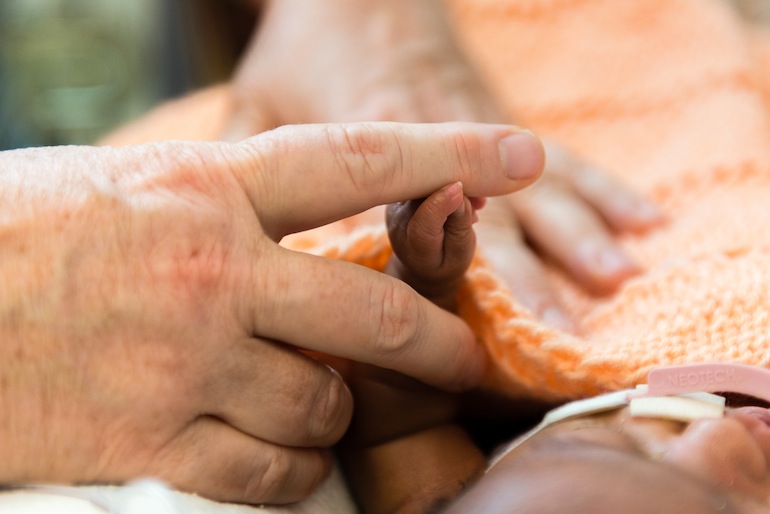Forty weeks.
The medical field considers forty weeks, or nine months, as the perfect pregnancy. Babies born before this mark face the possibility of health complications that could last a lifetime. Yet, according to the latest data, more women are having their babies too soon.
The number of preterm births in the United States rose in 2015 for the first time in eight years, according to data presented Tuesday by the March of Dimes. The organization also reported that racial minorities continue to experience early labor at higher rates.
Preterm births increased from 9.57 to 9.63 percent in 2015, which represents an additional 2,000 babies born prematurely in the U.S., the report found.
Seven states — Arkansas, Connecticut, Idaho, Nebraska, New Mexico, Utah and Wisconsin — had higher preterm birth percentages than in 2014, but the report does not offer any suggestions for what caused that increase. Four states — Vermont, Oregon, New Hampshire and Washington — earned the highest marks from the organization for having a preterm birth rate at 8.1 percent or below.
Overall, the national uptick earned the U.S. a C rating on an A to F scale.
The March of Dimes researchers used data compiled by the National Center for Health Statistics. The center maintains the Vital Statistics Cooperative Program, which collects health information from 57 health agencies to assess different markers of health across the nation.
The increase in the number premature children signals a call to revisit the existing strategies, said Edward McCabe, chief medical officer of March of Dimes.
“We feel that this is a recognition that we need to work harder as a nation, that we need to focus,” he said.
Preterm births, defined as a child born before 37 weeks of pregnancy, occur in nearly 1 out of every 10 deliveries in the U.S. It is the leading cause of neurological disorders in children, the Centers for Disease Control and Prevention reports, and represents the single greatest contributor of infant death.
Breena Holmes, maternal and child health director at the Vermont Department of Health, said she is proud of her state’s exemplary low rate of preterm births. The state boasts the lowest rate in the nation and maintains innovative programs to increase access to care. However, Holmes said she still worries that there are too many preterm babies born in the state.
“I’m still aware that every time a baby comes early, there was a system problem that we could have worked on,” she said.
Disparities continue across geographic, ethnic and racial lines, McCabe said. Asians and Pacific Islanders fared the best among all racial and ethnic minorities with a preterm birth rate of 8.5 percent, a full percent lower than the national average. Hispanics and Whites also hovered below the national average at 9 percent.
African-American women fared the worst among all minority groups. More than 13 percent of children born to black mothers arrived prematurely, according to the report. States with large African-American populations, such as Louisiana, Mississippi and Alabama, had the highest percentages of preterm births.
Geography also played a key role in the rise, McCabe said. Increasing numbers of urban and rural communities lack access to medical care around the nation. Even in states with overall low numbers of preterm births, McCabe explained, county breakdowns reveal wide variations.
“We want every baby no matter where they’re born, no matter their birth ethnicity, to be born with the best start in life,” he said.
Claire Brindis, director of Philip R. Lee Institute for Health Policy Studies at the University of California, San Francisco, said the racial and ethnic divides underscore an overemphasis on medical intervention and lack of education among women. Planning for pregnancy does not start with prenatal care, she said, but with understanding the risk factors and wishes regarding family planning that the patient has before conceiving a child.
“We need to go upstream to understand all the contributing factors to understand this multi-faceted issues,” she said.
While not every preterm birth can be prevented, McCabe admits, helping a woman experience the best pregnancy possible can greatly improve outcomes.
“Every woman is trying to do the best that she can,” he said. “We need to show her what can be done.”
This story was produced by Kaiser Health News, an editorially independent program of the Kaiser Family Foundation.


